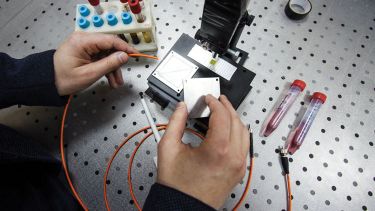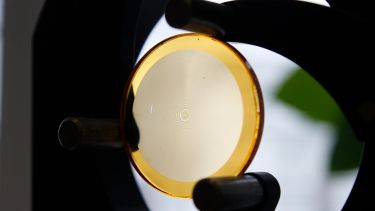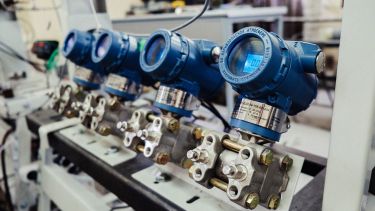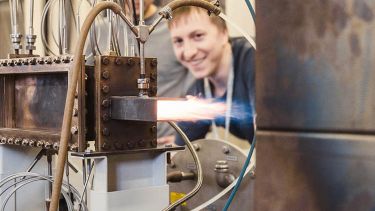Theoretical and experimental studies will be held at the Samara University in the framework of the Russian Science Foundation grant
On the basis of Samara University scientists from Russia, France and Japan will conduct theoretical and experimental studies on the creation of a technology to produce new highly efficient bimetallic materials for aerospace engineering. The materials are meant to withstand significant mechanical stress and extreme temperature extremes with a difference of several hundred degrees.
Composed of two separate metals joined together, bimetallic materials have long been used in aviation and space technology since conventional alloys often do not provide the necessary range of properties. Bimetals allow combining the advantages of different materials, increasing reliability, wear resistance and durability. The use of bimetallic materials, e.g., steel and aluminum, allows achieving the necessary strength characteristics, while reducing the weight of parts and structures and respectively increasing the carrying capacity and fuel efficiency of an aircraft or launch vehicle.
However, according to Samara scientists, in most cases the existing technologies do not provide sufficient bonding strength of heterogeneous layers. Moreover, different thermophysical properties of different metals pose a risk of an interlayer destruction at large temperature variations (e.g., in space it varies from -200°C to +200°C and higher). Within the framework of the grant, scientists of the three countries plan to develop a scientific foundation of new technology and experimentally obtain a layered functional high-gradient material (FHGM) with increased resistance to the interlayer destruction.
“It is crucial for the materials used in the aerospace engineering to be thermally stable, so that they do not expand at high temperatures. That can be achieved by composing different materials with different linear expansion coefficients and alternating layers of them: when one layer expands, the other contracts resulting in no changes in the whole volume. Usually bimetallic materials are produced by rolling – due to the high pressure metal surfaces are actually welded. We propose a new method which involves using additive technologies,” Fedor Grechnikov, the head of Metal Forming Department of Samara University, a RAS academician, explained.
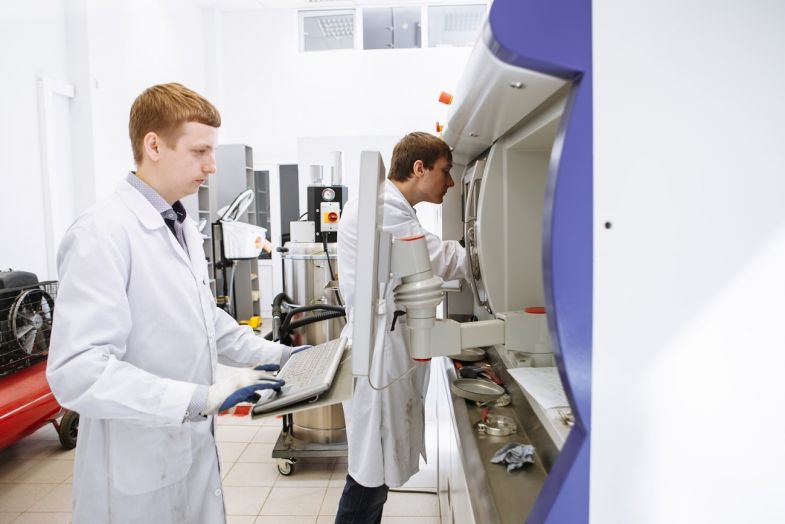
Laboratory of Additive Technologies (Samara University) develops a method to apply layers of metal-powder composition on sheet metal substrates
Scientists propose to apply layers of a metal-powder composition on sheet metal substrates using additive technologies to create a special micro- and macro-relief on the surfaces. That will substantially increase the contact area between the layers and even form micro locks as mechanical permanent joints. The resulting composite is planned to be further mechanically shaped, e.g., rolled, to obtain a high-strength connection between the metal layers. “This task requires considerable theoretical and experimental study, therefore, we will initially develop mathematical models and digital twins of the FHGM, which will help us to calculate and predict the properties of the new material,” Aleksandr Khaimovich, the head of Engine Production Technology Department, added.
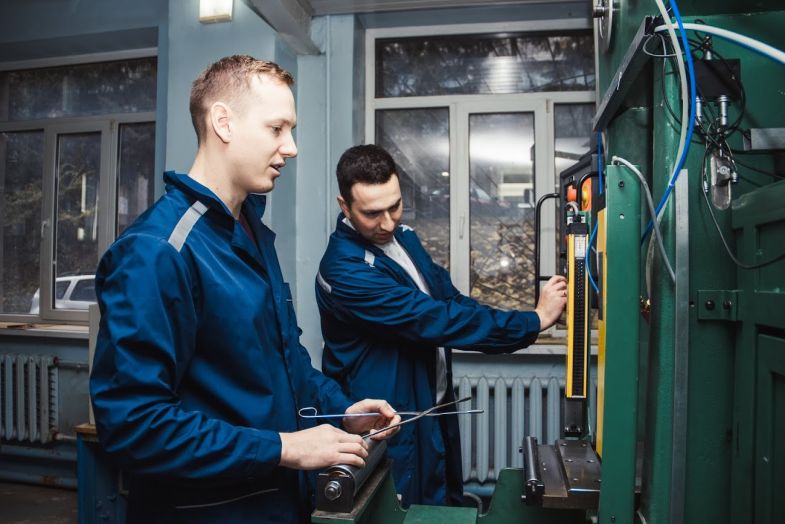
The resulting composite is planned to be further mechanically shaped to obtain a high-strength connection between the metal layers
“It is a large joint project. It can be called a joint one even within our university since it will involve two departments at once – Metal Forming and Engine Production Technology. In addition to the large experimental part planned under this grant, we will also carry out theoretical studies. The results are supposed to provide us with not only technologies, but also the fundamentals for creating a new type of material,” Iaroslav Erisov, an associate professor of Metal Forming Department, highlighted.
For reference
The work will be carried out as part of the Development of the Method for Production and Optimization of the Properties of High-Gradient Bimetallic Materials for Aerospace Application project. This project of Samara University won an open public competition for grants from the Russian Science Foundation in the priority area of activity “Fundamental Research and Exploratory Research by order of the President of the Russian Federation”. The grant is supposed to last for three years with a possible extension of funding; the annual amount of funds allocated under the grant is 8 000 000 Rubles (almost 91 000 Euro).
The project provides for the creation of an international research team, which will include employees of Samara National Research University, Ishlinsky Institute for Problems in Mechanics RAS (Moscow, Russia), Tokyo Metropolitan University (Tokyo, Japan) and University of Southern Brittany (Morbihan, France). Dr.Sci in Physics and Mathematics Sergei Aleksandrov, a leading researcher at the Laboratory of Mechanics of Technological Processes at Ishlinsky Institute for Problems in Mechanics RAS, is the head of the research group. Ken-ichi Manabe, a professor at Mechanical Systems Engineering Department, Tokyo Metropolitan University (TMU), and Professor Pierre Yves Manach, the director of Dupuis de Lom Research Institute (IRDL), University of South Brittany, are also named among the leading scientists of the project.
Find out more about Samara University.


